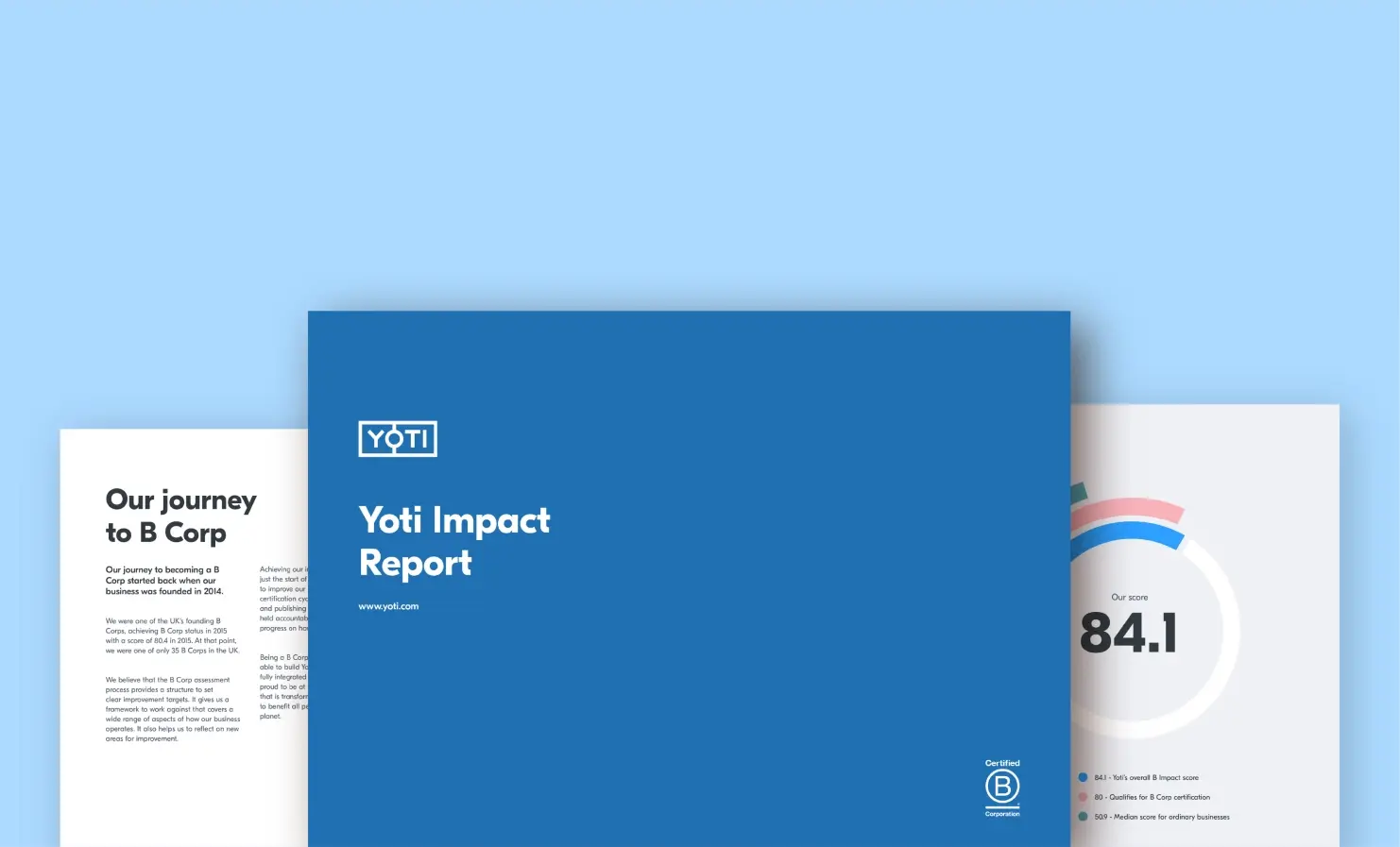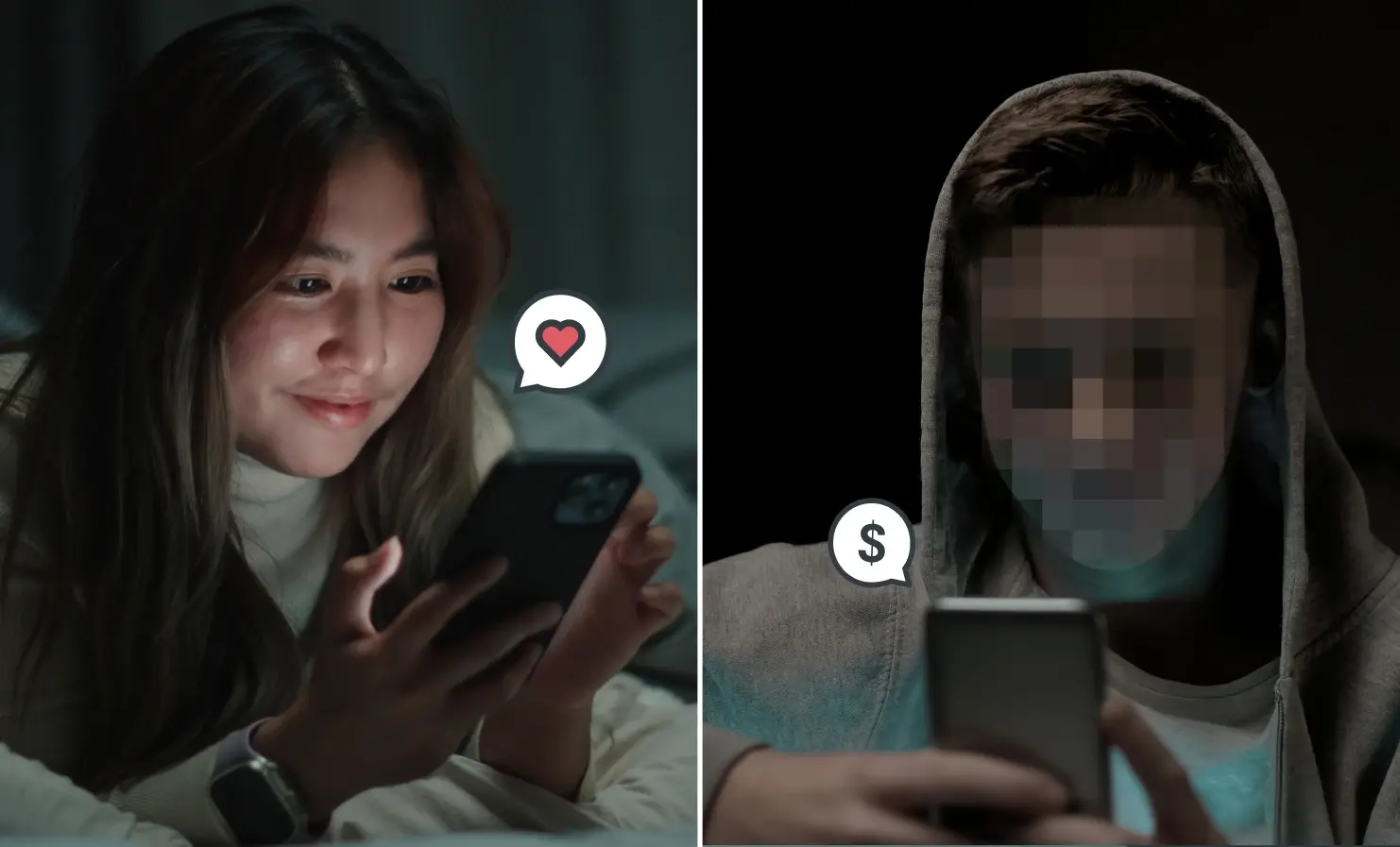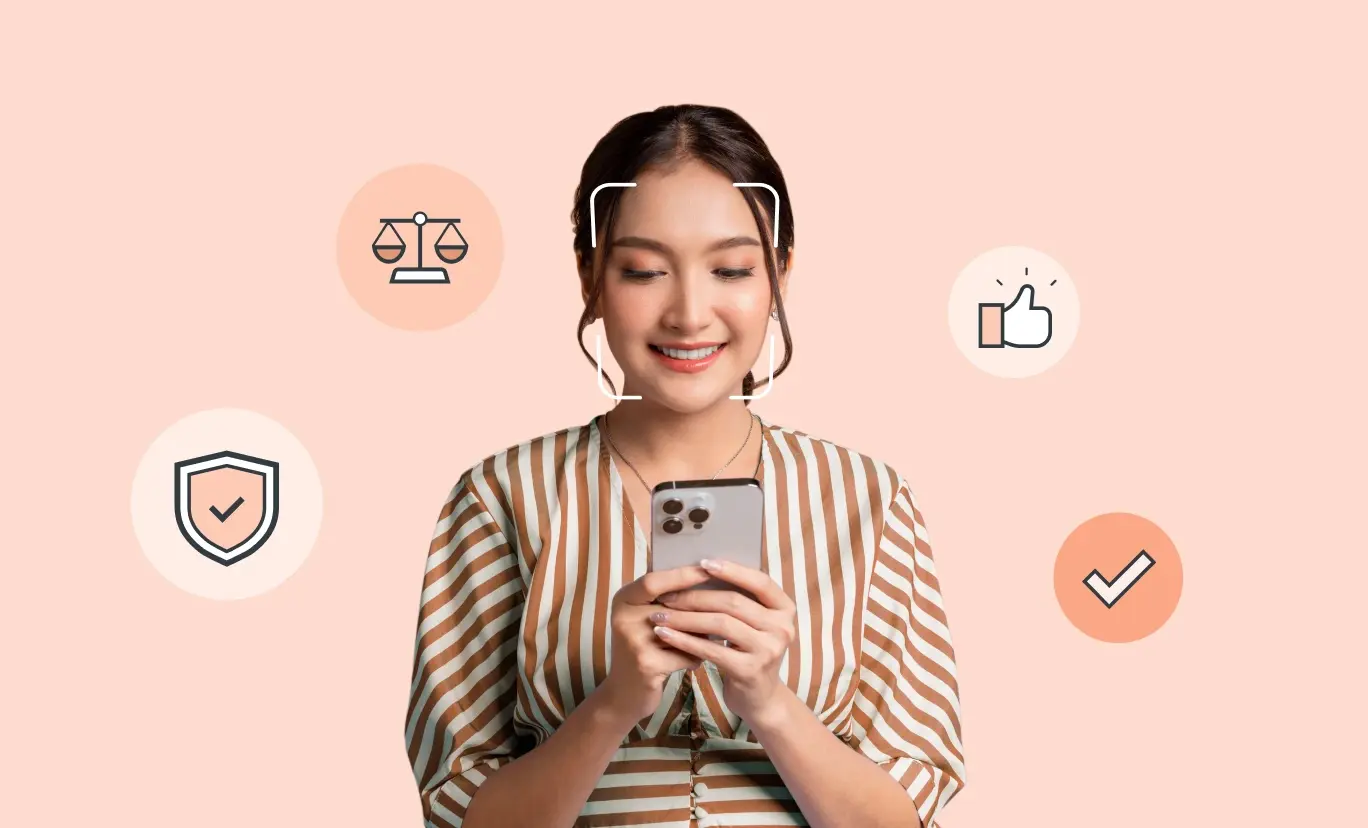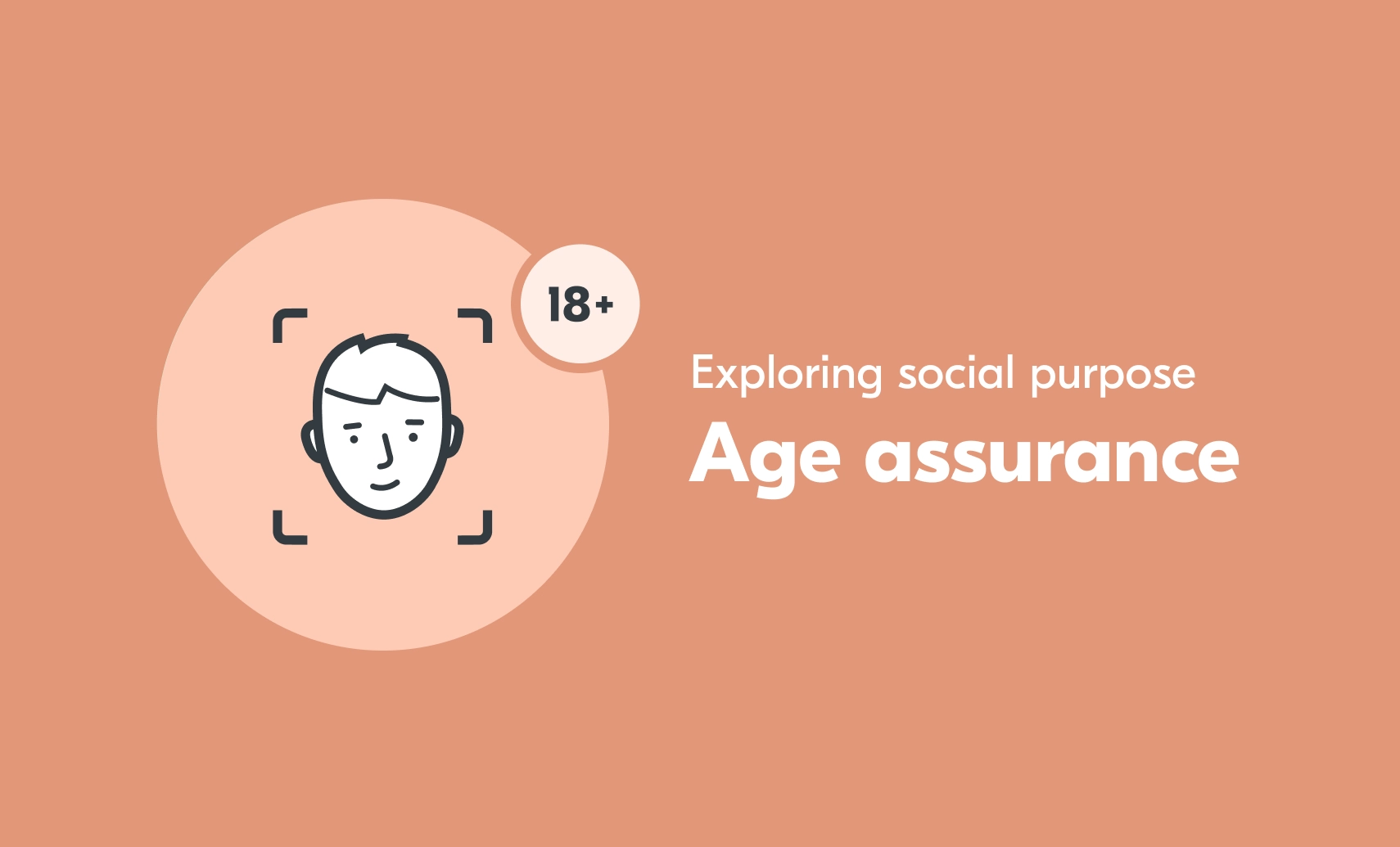
Everything we do at Yoti is with our social purpose in mind. From developing our products to driving regulatory change, we’re always thinking about the challenges we can help solve.
This series looks at how our products could meaningfully benefit individual people and wider society. This article focuses on our age assurance solutions, which include facial age estimation, reusable Digital IDs and age verification with a document.
Ensure children only access age-appropriate content online
It is becoming increasingly easy for young people to access the internet. Therefore it’s vital that young people can only access age-appropriate content. Unfortunately, many children are accessing online content which is inappropriate, explicit or harmful for their age.
The average age that children first see pornography is 13 years and by age 9, 10% had seen pornography. Over a fifth of children have a false social media age of over 18, whilst 90% of parents think that social media platforms should enforce minimum age requirements.
With the introduction of new laws such as the Online Safety Act, online platforms will be required to restrict access in order to enable age-appropriate access to goods and services. These regulations apply to a range of industries including gaming companies, dating sites, social media platforms and adult sites.
Platforms will need to check the ages of their users to ensure that only those who meet the age threshold can access them. This could mean ensuring that only adults should access adult content. Or that only individuals of the agreed age should create an account on certain social media sites.
If companies perform effective age checks, they’re able to ensure that young people and adults access age-appropriate content. Platforms can be aware that some materials may have risks for minors and introduce appropriate safeguards.
Creating age-appropriate experiences
Checking the ages of users can ensure that young people can only access age-appropriate platforms. Once on these platforms, it can also ensure that they are only exposed to content and features which are appropriate for their age. For instance, businesses can tailor their platforms to:
- turn off notifications late at night
- not allow geolocation tracking
- turn off age-inappropriate advertising or profiling
- make sure children cannot be contacted by people aged over 18
- provide age-appropriate support
- ensure that children cannot enter into legal contracts
- prevent children from seeing explicit or adult content
Age assurance can help platforms to protect the mental health of young people and support their development. If platforms know the ages of their users, they can offer appropriate content, care, protection and access to support services. In turn, this enables young people to have safer, positive experiences online.
Helping young people to safely navigate the internet
In the same way that some spaces are made only for adults, others are designed exclusively for children. This can include some social media sites, apps and gaming platforms. In these cases, age assurance methods should be used to determine that a user is under a particular age threshold, rather than over.
This allows young people to thrive in online environments whilst being sure that other users on the platform are similarly aged to them. Young people can, and should be able to, safely develop online without the risk of potentially harmful adults existing in the same spaces.
Including those without identity documents
Around one billion people around the world are unable to legally prove their identity. Having an identity is both a human right and one of the UN’s Sustainable Development Goals. Those who are less likely to have a usable official identity include:
- older people (over 80s)
- those with severely limiting disabilities
- those who are unemployed
- people without qualifications
- lower income groups
- survivors of domestic abuse who no longer have access to physical documents
- people without permanent housing
- refugees and people who are awaiting their citizenship status
- those from Gypsy, Roma or Traveller communities
- young people
- those whose gender identity does not align with the sex they were assigned at birth
Proving age should be inclusive and accessible. Therefore, businesses should offer a variety of age assurance methods to their users. For example, if a user does not have any identity documents, facial age estimation could also be offered for greater inclusion.
Facial age estimation technology estimates a person’s age from a facial image. It is powered by an algorithm that’s learned to estimate age in the same way humans do – by looking at faces. The technology detects a live human face, analyses the pixels in the image and gives an age estimate.
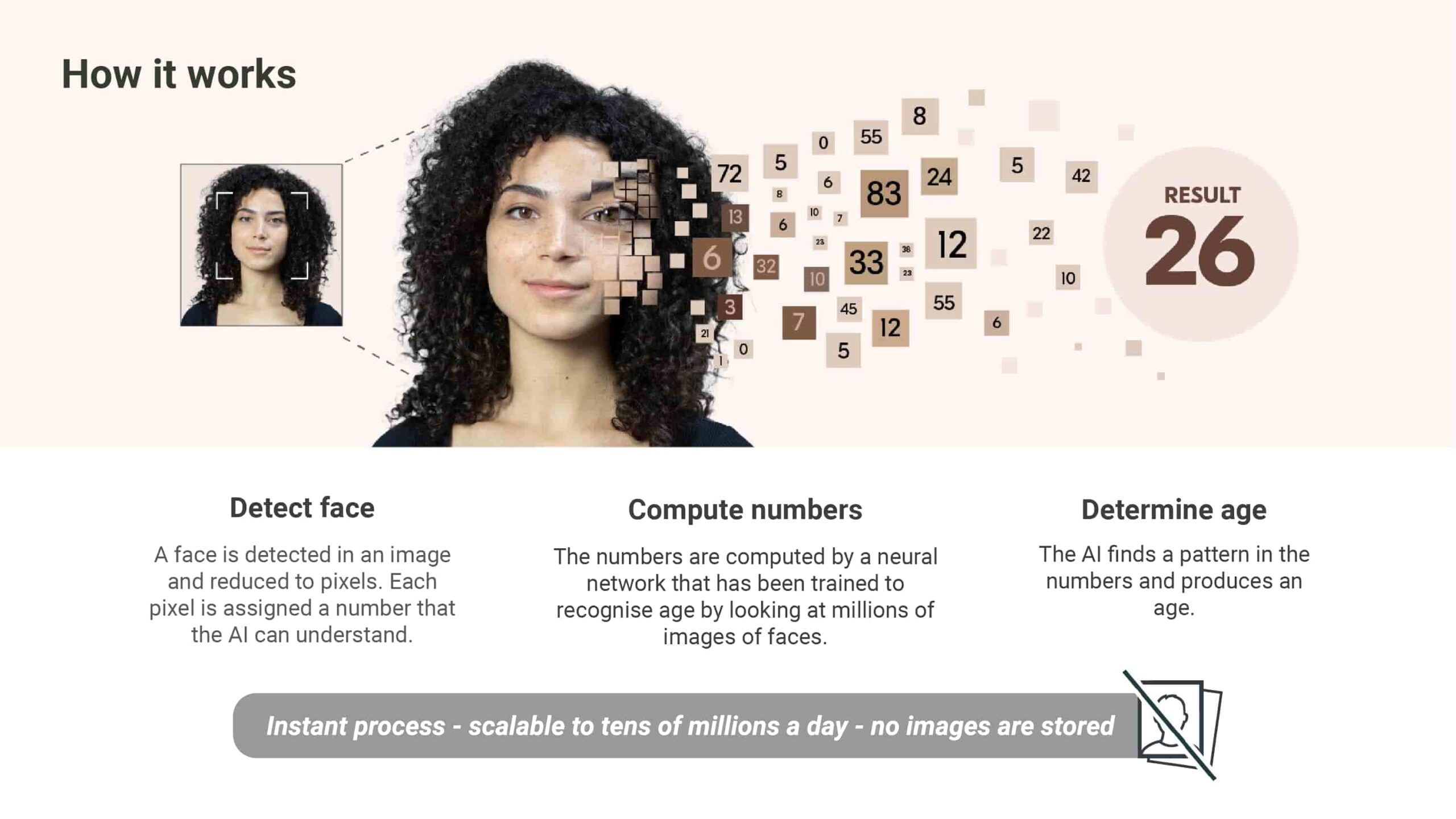
Facial age estimation is not facial recognition. It estimates someone’s age without identifying them. It does not scan their face against a database and cannot recognise anyone.
As soon as an age has been estimated, the image is immediately and permanently deleted. Since the user’s age is estimated from a facial image, no documents are required. As a result, the technology offers a more inclusive and private option for people to prove their age.
Protecting user privacy
For years, it was often thought that the best way to check age is with an official identity document, like a passport or driving licence. If done correctly, this method can be effective and offer a high level of assurance. However, businesses should consider whether the privacy risks are proportionate to the use case.
For instance, when buying age-restricted goods, a cashier will ask to see the customer’s ID. But all they really need to know is the person’s age, and that the ID belongs to the person in front of them. They don’t need to see all the other information contained on the document such as the person’s full name, address or date of birth.
It could be more proportionate and privacy-preserving for the customer to prove their age using facial age estimation or with a Digital ID. Both of these methods allow people to prove their age whilst sharing less data; giving them more protection against the risks of identity theft and fraud.
Minimising conflict at checkouts
Our age assurance technology can also help improve the safety of retail staff. Age verification accounts for between 40-50% of interventions at self-checkouts. Digital age verification has the potential to improve the safety of retail staff and reduce friction between staff and customers.
Staff are legally required to check the ages of customers when they are buying age-restricted products. Yet when customers are asked to show proof of age, it can be one of the most common triggers of violence and abuse towards retail staff.
Typically, it is young people who need to prove their age the most. However, many are too young to have a driving licence and it is a disproportionate risk for them to carry around their passport.
It’s also becoming more challenging for retail staff to confidently and accurately check people’s age, due to the availability of high-quality fake identity documents. Alternative age assurance methods such as a reusable Digital ID app offer people an easier, smarter and safer way to prove their age. With their details securely encrypted on their phone, they can prove their age in seconds, without showing physical identity documents.
Aiding child protection
To protect young people, it is essential for children to be able to prove that they are under 18. Yet young people are less likely to have official identity documents. Knowing a person’s age is crucial in cases involving child protection, such as identifying and preventing child exploitation, child trafficking, or underage labour.
Offering alternative ways to prove age can aid the enforcement of child labour laws and ensure the rights of children are protected. They can also ensure that young people receive appropriate support. This could be through social workers or organisations that work towards safeguarding children.
In an online context, this can be demonstrated by our work with Childline. The Report Remove tool allows young people to report nude images or videos of themselves online. The Internet Watch Foundation (IWF) will work to have it removed if the content contains a child and breaks the law. But for the IWF to act, they need to be certain the person is under 18.
Previously, this meant that the young person involved would need to send a scan of their identity document to the IWF. This led to fears of submitting the removal request. Instead, young people can now prove their age using a Digital ID, without needing to submit any other personal details.
Offering a choice in age assurance methods
Comprehensive age assurance solutions can help address a whole range of everyday challenges. From helping young people thrive online to offering accessible and inclusive ways for people to prove their age, it is vital that businesses accept a range of high-quality and secure age assurance methods.
If you’d like to know more about our age assurance solutions, please get in touch.

